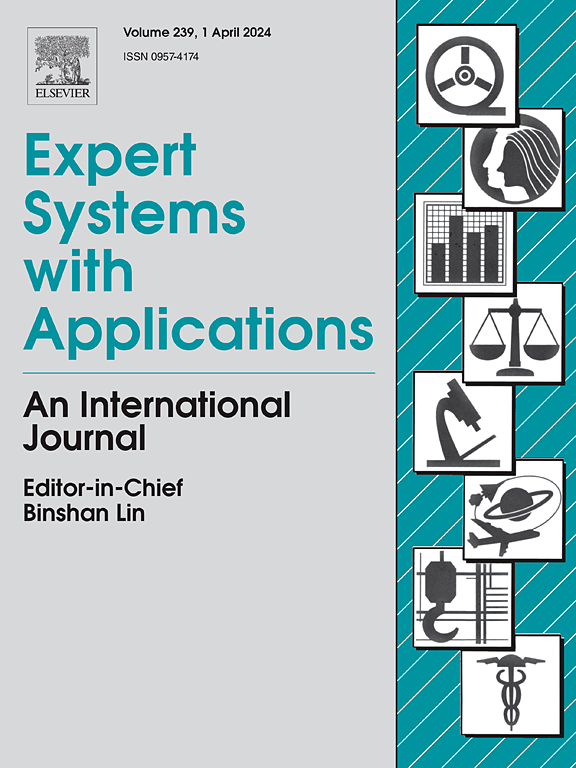LLM-guided fuzzy kinematic modeling for resolving kinematic uncertainties and linguistic ambiguities in text-to-motion generation
IF 7.5
1区 计算机科学
Q1 COMPUTER SCIENCE, ARTIFICIAL INTELLIGENCE
引用次数: 0
Abstract
Generating realistic and coherent human motions from text descriptions is essential for applications in computer vision, computer animations, and digital environments. However, existing text-to-motion generation models often overlook kinematic uncertainties and linguistic ambiguities, leading to unnatural and misaligned motion sequences. To address these issues, we propose a novel framework that integrates fuzzy kinematic modeling with large language model (LLM) guidance to jointly model kinematic uncertainties and resolve linguistic ambiguities. Our approach first extracts rich kinematic attributes from raw motion data and converts them into fuzzy kinematic facts (FKFs), which serve as an uncertainty-aware motion representation across different kinematic hierarchies. Simultaneously, we refine ambiguous text descriptions by extracting contextual terms using LLM-guided few-shot in-context learning, enhancing text with additional semantic clarity. These FKFs and contextual terms are then used to train a diffusion-based motion generation model, ensuring semantically accurate and physically plausible motion synthesis. To further enhance kinematic structural consistency in FKF representations, we introduce a Graph-Augmented Self-Attention (GASA) module, which injects spatio-temporal relational constraints into the diffusion process, improving motion coherence and structural integrity. Evaluations on HumanML3D and KIT-ML datasets demonstrate that our method outperforms state-of-the-art models, achieving the lowest FID scores (0.052 and 0.091) and reducing kinematic uncertainty footprint by 21.1% and 17.7%, respectively. The source code and additional resources are publicly available at https://alimanjotho.github.io/llm-fqk-t2m.

基于llm的模糊运动学建模在文本到运动生成中的不确定性和语言歧义
从文本描述中生成逼真和连贯的人体运动对于计算机视觉、计算机动画和数字环境中的应用至关重要。然而,现有的文本到运动生成模型往往忽略了运动的不确定性和语言的模糊性,导致不自然和不对齐的运动序列。为了解决这些问题,我们提出了一种新的框架,该框架将模糊运动学建模与大语言模型(LLM)指导相结合,共同建模运动学不确定性并解决语言歧义。我们的方法首先从原始运动数据中提取丰富的运动属性,并将其转换为模糊运动事实(FKFs),作为跨不同运动层次的不确定性感知运动表示。同时,我们通过使用llm引导的少量上下文学习提取上下文术语来精炼模糊的文本描述,通过额外的语义清晰度增强文本。然后使用这些FKFs和上下文术语来训练基于扩散的运动生成模型,确保语义准确和物理上合理的运动合成。为了进一步增强FKF表示的运动结构一致性,我们引入了一个图增强自注意(GASA)模块,该模块将时空关系约束注入扩散过程,从而提高运动一致性和结构完整性。对HumanML3D和KIT-ML数据集的评估表明,我们的方法优于最先进的模型,实现了最低的FID分数(0.052和0.091),并将运动学不确定性足迹分别减少了21.1%和17.7%。源代码和其他资源可在https://alimanjotho.github.io/llm-fqk-t2m上公开获得。
本文章由计算机程序翻译,如有差异,请以英文原文为准。
求助全文
约1分钟内获得全文
求助全文
来源期刊

Expert Systems with Applications
工程技术-工程:电子与电气
CiteScore
13.80
自引率
10.60%
发文量
2045
审稿时长
8.7 months
期刊介绍:
Expert Systems With Applications is an international journal dedicated to the exchange of information on expert and intelligent systems used globally in industry, government, and universities. The journal emphasizes original papers covering the design, development, testing, implementation, and management of these systems, offering practical guidelines. It spans various sectors such as finance, engineering, marketing, law, project management, information management, medicine, and more. The journal also welcomes papers on multi-agent systems, knowledge management, neural networks, knowledge discovery, data mining, and other related areas, excluding applications to military/defense systems.
 求助内容:
求助内容: 应助结果提醒方式:
应助结果提醒方式:


